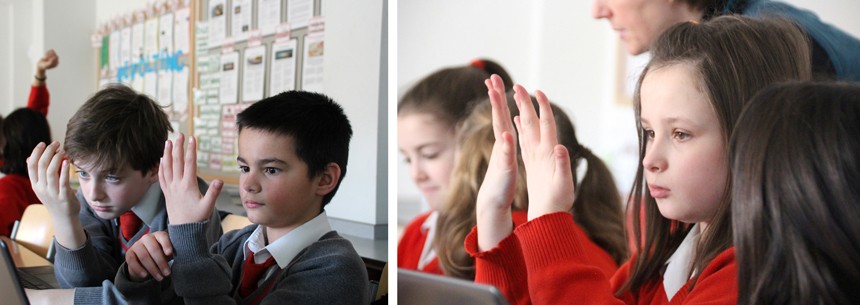Form 3 have been working on a collaborative English and Art project which has focused on studying minute details of our world and using these thoughts and observations to create artwork and poetry. In Art, this was inspired by William Blake’s ‘To See a World in a Grain of Sand’ and poetry entitled ‘On the Palm of My Hand’ which was centred on the idea of observing and wondering.

In Art, Form 3 used an app called ‘Sketches’ which has a wide choice of tools enabling the children to create digital drawings with a great variety of different marks, colours and patterns. These drawings are digital interpretations of drawings created in their sketch books about the wonder of very small things. Reflecting on the use of the app some children remarked that the technology makes it possible to be bolder than when using with traditional materials and that it encourages an experimental approach, while others preferred the immediacy of feeling the flow of a pencil on paper. Art teacher, Mrs Sam Downer, commented: “Some children liked the convenience of having all their ‘materials’ available on the side of the screen. You can save your work at any stage and make many different versions.”

The theme of observation and reflection, coupled with the use of new technology was carried through in English lessons also, based on the theme "On the Palm of My Hand", with Head of English, Mrs Suzanna D’Oyly explaining, “The poetry idea was prompted by an Assembly in which the children were encouraged to ‘notice’ and this is something we encourage in Mindfulness practices too. I wanted to use the Chrome Books creatively and so we used the camera function, took screen shots of the hand in different lights and from different angles and then wrote metaphors and similes to go with each picture. From here the children worked them into poems. Effective use of imagery is something children can find challenging to do consistently and writing poetry is the perfect way to practise this. The fact that they had been thinking along similar lines in Art clearly helped them to access the task and to respond in such a creative way.”